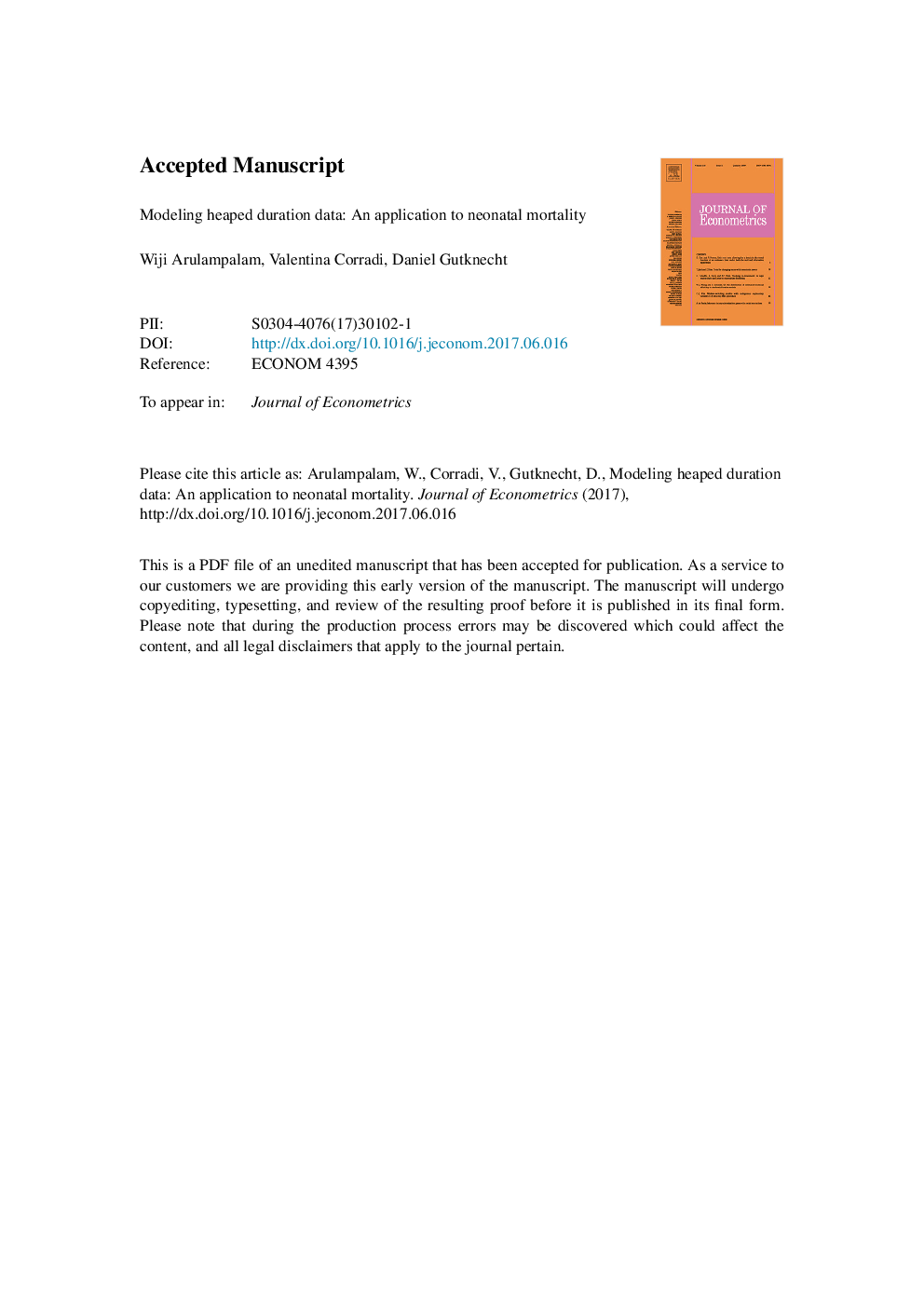| Article ID | Journal | Published Year | Pages | File Type |
|---|---|---|---|---|
| 5095455 | Journal of Econometrics | 2017 | 36 Pages |
Abstract
In 2005, the Indian Government launched a conditional cash-incentive program to encourage institutional delivery. This paper studies the effects of the program on neonatal mortality using district-level household survey data. We model mortality using survival analysis, paying special attention to substantial heaping, a form of measurement error, present in the data. The main objective of this paper is to provide a set of sufficient conditions for identification and consistent estimation of the (discretized) baseline hazard accounting for heaping and unobserved heterogeneity. Our identification strategy requires neither administrative data nor multiple measurements, but a correctly reported duration point and the presence of some flat segment(s) in the baseline hazard. We establish the asymptotic properties of the maximum likelihood estimator and derive a set of specification tests that allow, among other things, to test for the presence of heaping and to compare different heaping mechanisms. Our empirical findings do not suggest a significant reduction of mortality in treated districts. However, they do indicate that accounting for heaping matters for the estimation of the hazard parameters.
Related Topics
Physical Sciences and Engineering
Mathematics
Statistics and Probability
Authors
Wiji Arulampalam, Valentina Corradi, Daniel Gutknecht,
